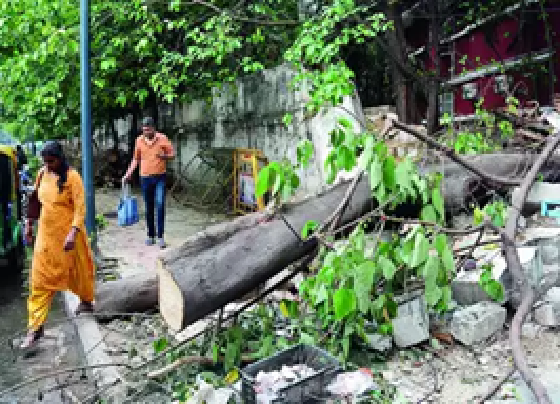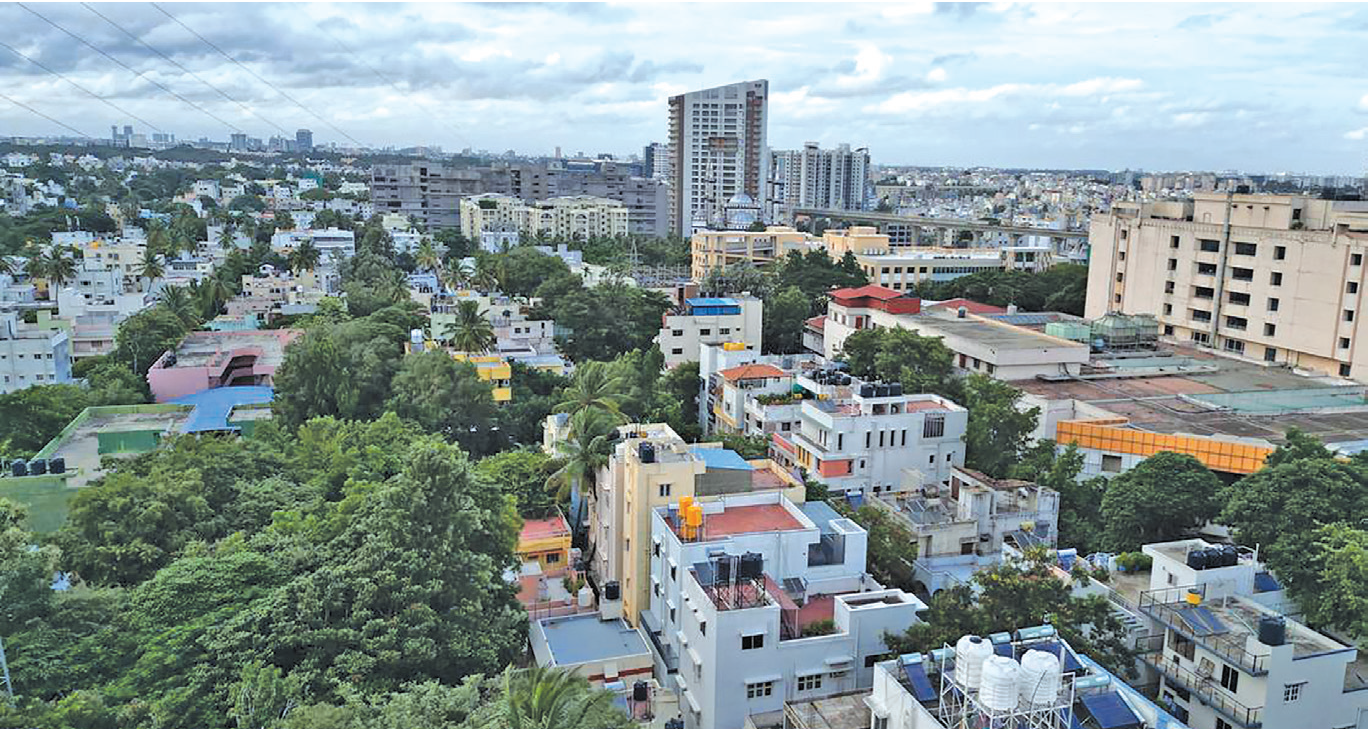
B'luru's diminishing green cover on further decline due to poor development
Sowmya Raju | NT
Bengaluru: Bengaluru is now facing a suffocating reality. Its green cover, once a lush in the 40% in the 1970 has withered to a meagre 10% in in 2022- 23, choked by unchecked urban sprawl and ill-conceived "rejuvenation" efforts.
The Bruhat Bengaluru Mahanagara Palike’s (BBMP) misguided lake development projects are accelerating the demise of the very ecosystems they aim to revive.
Instead of prioritising ecological restoration, BBMP's approach often resembles "cosmetic beautification."
Concrete walkways, manicured lawns, and fancy fountains replace the natural fringes of lakes, displacing native vegetation and the vital creatures it shelters.
Trees, essential for air purification and water table maintenance, fall victim to this misplaced desire for order, paving the way for rampant soil erosion and pollution.
BBMP’s "beautification" harms lakes, activists warn
Lake activist Raghavendra B Pachhapur, associated with Action Aid, highlights the shortcomings in the BBMP’s lake rejuvenation initiatives, emphasising potential mistakes in the guise of protection.
Pachhapur explains that natural water bodies have developed shallow areas near their banks over the years, supporting diverse plant and marine life.
However, the BBMP's rejuvenation efforts, aimed at achieving uniform depth, may negatively impact the underwater ecosystem.
Ulhas Anand, co-founder of Ecoedu, supports this perspective, asserting that plants thriving in the shallow zones provide essential oxygen to the water, fostering underwater biodiversity.
The complex issue of lake rejuvenation in Bengaluru demands a careful approach to ensure that these initiatives benefit the ecosystem without causing unintended consequences.
Further compounding the problem is the BBMP's penchant for concretising lake beds and removing natural weeds.
Pacchapur emphasises, "The BBMP's inclination to cement lake beds and introduce so-called 'beautification' elements like gardens, parks, and walk ramps are resulting in a loss of green cover around the lakes. When we envision a lake, we picture lush greenery and birds. However, what we observe now are concrete pathways adorned with lampposts. Where will the birds find suitable spaces to build their nests? Prioritising aesthetics over ecological balance, these projects risk becoming mere greenwashing exercises, concealing the city's environmental crisis beneath a superficial veneer of artificial beauty.”
Pacchapur urges that the BBMP must adhere to Justice N K Patil Committee's recommendations for lake rejuvenation, emphasising a balance of shallow water at the foreshore and deeper sections towards the bund.
A uniform de-silting approach and elevated bund may risk ecological diversity, deviating from true rejuvenation.
Despite years since the Justice NK Patil Committee report, BBMP's unchanged approach doesn't align with ecological goals.
He added, “Shallow Water Matters which is crucial for sustaining ecology, evidenced by migratory birds at Chunchaghatta Lake during water recession. Preserving 10-20% of the lake area as shallow water is vital. Lingadheeranahalli Lake's green cover loss hampers roosting, urging BBMP to consult naturalists for enhanced rejuvenation.”
 English daily published in Bengaluru & Doha
English daily published in Bengaluru & Doha






